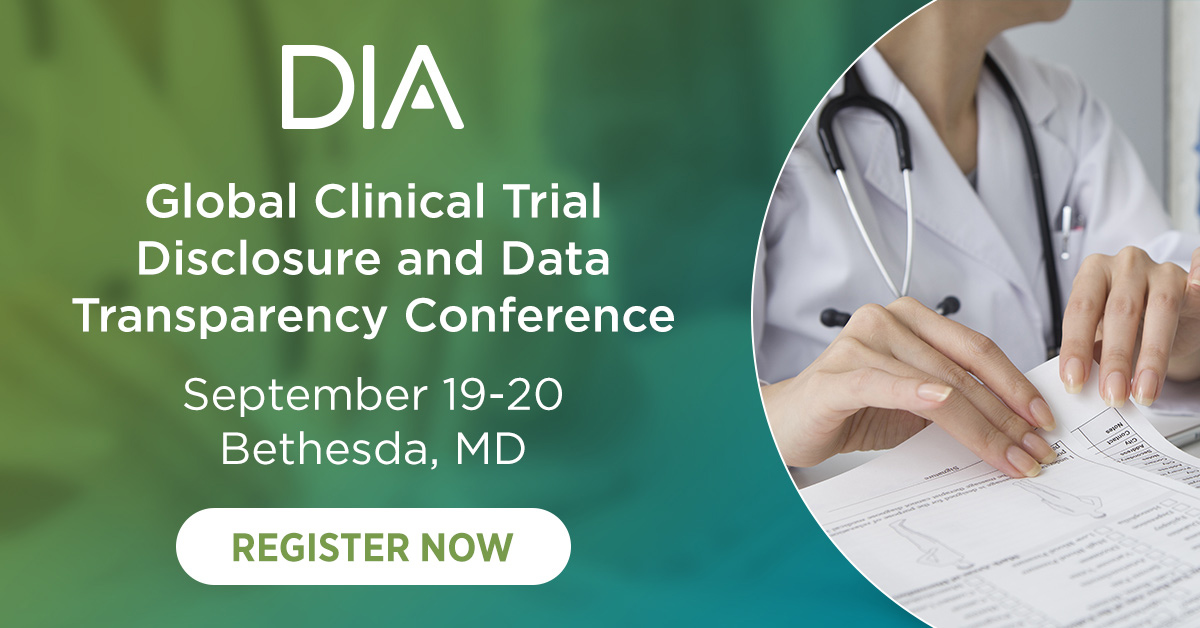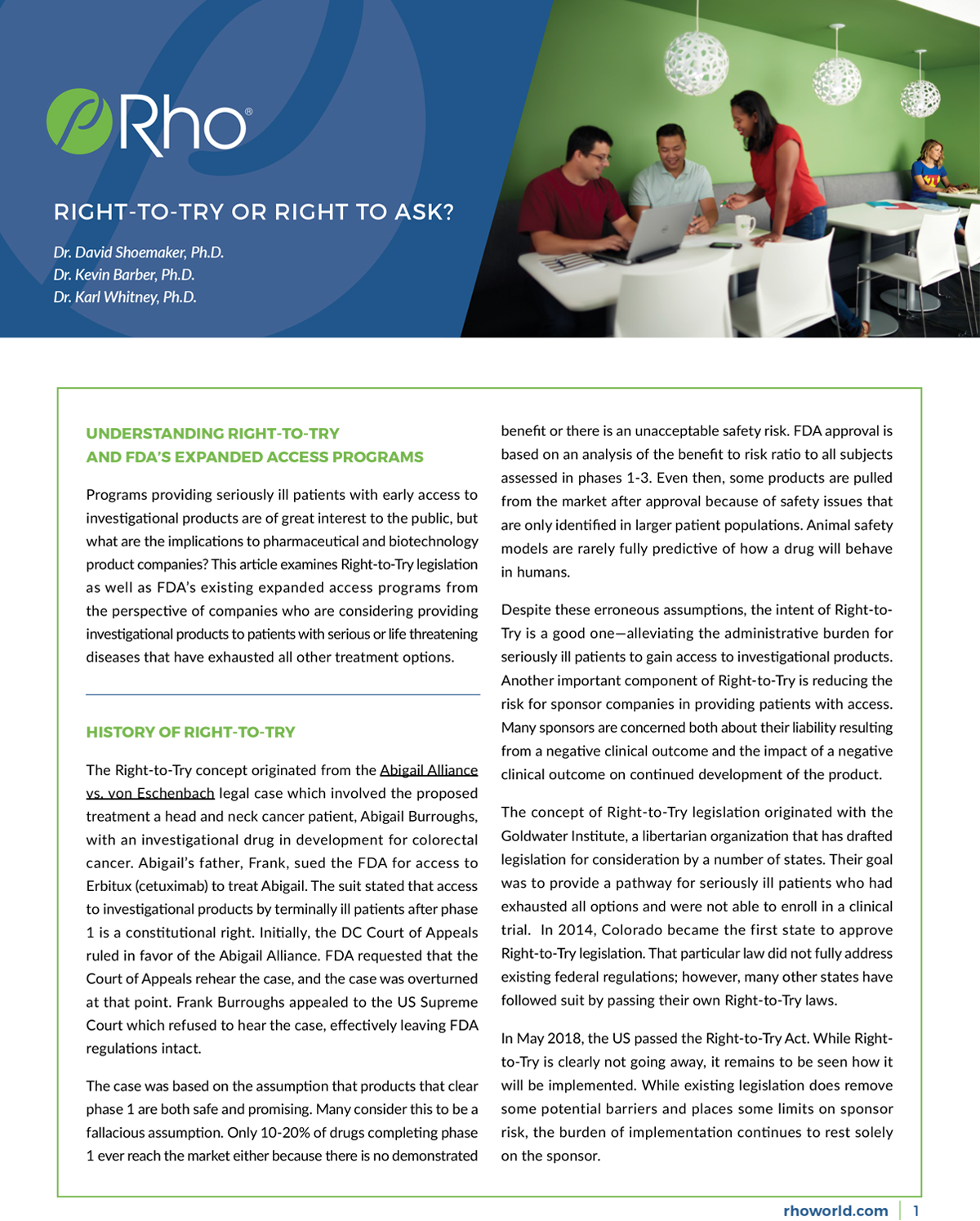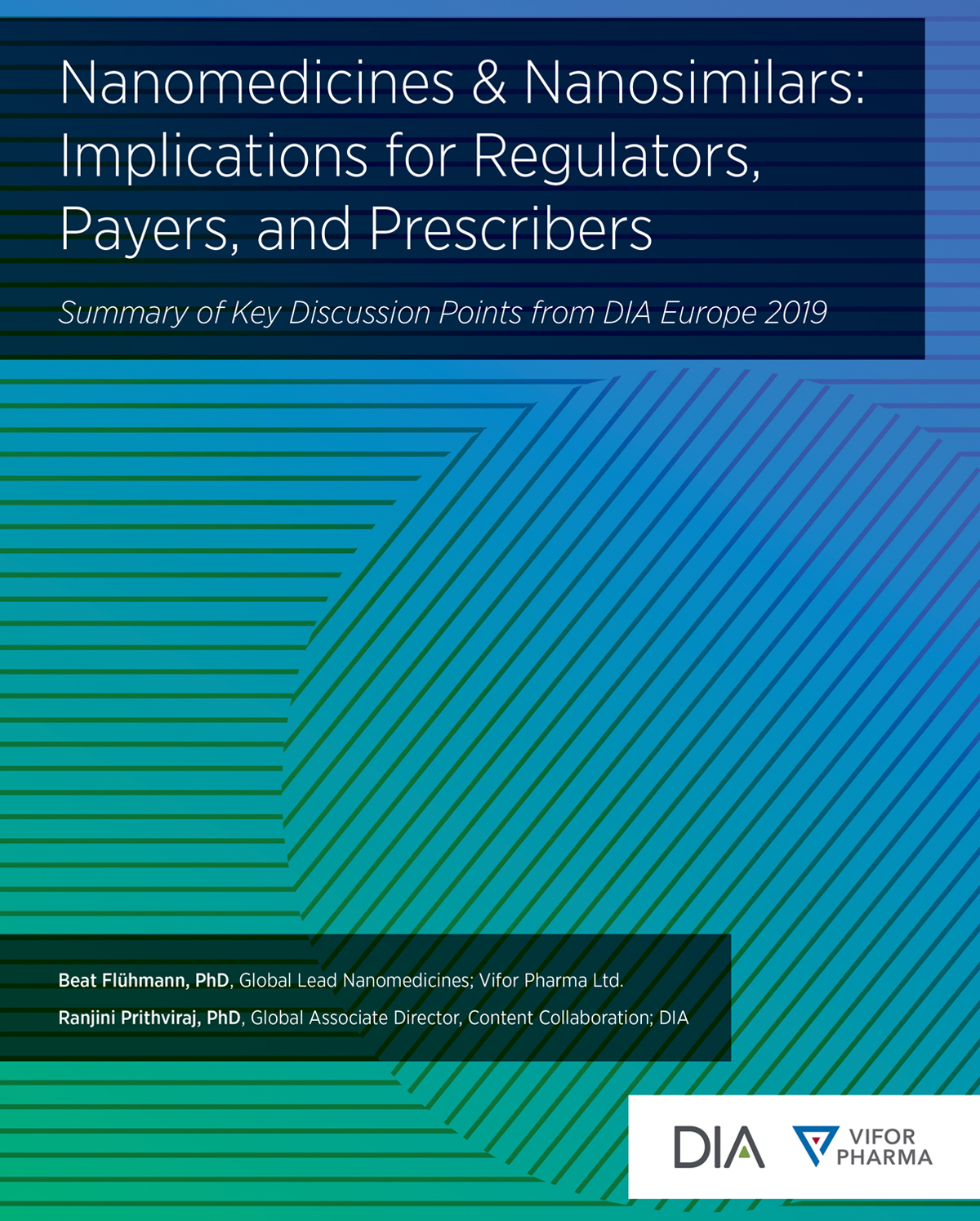July 2019 Global Forum
Table of Contents
DIA China 2019
DIA China Advisory Council Young Members
Patient Perspectives
White Papers
Around The Globe
Career Column
EXECUTIVE LEADERSHIP
Subscribe
Love Global Forum‘s new online format? Subscribe today and never miss an issue.
Editorial Board
Content stream editors
Gary Kelloff US National Institutes of Health
David Parkinson ESSA Pharma, Inc.
regulatory science
Yoshiaki Uyama Pharmaceuticals and Medical Devices Agency (PMDA)
Adora Ndu BioMarin Pharmaceutical, Inc.
Patient engagement
Deborah Collyar Patient Advocates In Research (PAIR)
Lode Dewulf Servier
Editorial Staff
Alberto Grignolo, Editor-in-Chief Parexel International
Ranjini Prithviraj, Global Associate Director, Content Collaboration DIA Publications
Sandra Blumenrath, Science Writer DIA Publications
Chris M. Slawecki, Senior Digital Copyeditor DIA Publications
Regional Editors
AFRICA
David Mukanga Bill and Melinda Gates Foundation
ASEAN
Silke Vogel Duke-National University of Singapore Medical School
AUSTRALIA/NEW ZEALAND
Richard Day University of New South Wales, Medicine, St. Vincent’s Hospital
CANADA
Judith Glennie JL Glennie Consulting, Inc.
Megan Bettle Health Canada
CHINA
Ling Su Shenyang Pharmaceutical University, Lilly Asia Ventures
Europe
Thomas Kühler Sanofi R&D
INDIA
J. Vijay Venkatraman Oviya MedSafe
JAPAN
Kazuhiro Kanmuri Inter-Professional, Inc.
MIDDLE EAST
Inas Chehimi Novartis
USA
Ebony Dashiell-Aje FDA
Young Professionals Editor
DIA Membership
Bringing together stakeholders for the betterment of global health care.

Alberto Grignolo, PhD
Editor-in-Chief
Global Forum
Fellow of DIA
ust back from DIA’s energized and thought-provoking 2019 Global Annual Meeting (DIA2019) in San Diego, I come away with three impressions:
- The phenomenal science that is driving new products is generating excitement, hope and, most importantly, amazing results. It has also changed the attitudes of regulators, who are messaging in clear terms their readiness to engage with sponsors early and often, to make sure that breakthrough cures reach patients rapidly. One caveat: in the realms of cell and gene therapy the clinical evidence of efficacy and safety may be ready far more quickly than a company’s ability to manufacture the product at scale for the market. This would be sad indeed, as patients would be kept waiting; companies are on notice from regulators (CBER’s Peter Marks, in particular) to not let this happen.
From Data to Knowledge:
Using Semantic AI In Biomedicine
iomedical data are accumulating at an exponential rate. Knowledge derived from these data is not growing nearly as fast. There is an urgent need for technologies that can move beyond analysis of individual datasets to more effectively extract and synthesize information spread across many public and internal data sources. Semantic AI platforms combining knowledge graphs with bioinformatics, AI, and machine learning applications can provide pharmaceutical and research organizations with continuously updated data-driven knowledge, aggregating information from billions of data points to inform R&D processes and accelerate drug discovery and development.
The grand challenge for the next decade is to accelerate the translation of data to knowledge such that it can lead to actionable insights, precise therapeutic interventions, and healthcare strategies. So how exactly does data become knowledge?
FDA Q&A:
Generic Versions of Narrow Therapeutic Index Drugs National Survey of Pharmacists’ Substitution Beliefs and Practices
Senior Science Advisor, Office of Research & Standards
Office of Generic Drugs, FDA
arrow Therapeutic Index (NTI) drugs are drugs for which small differences in dose or blood concentration may lead to serious therapeutic failures or adverse drug reactions. Generic NTI drugs are approved by the FDA as therapeutically equivalent to the reference drug; that is, they are expected to have equal effect and no difference when substituted for the brand name product. Since small changes in bioavailability of NTI drugs can alter clinical outcomes, FDA recommends tighter quality and bioequivalence (BE) limits to ensure the safety and efficacy of generic NTI drugs.
However, confusion still exists among some healthcare providers and patients over whether generic NTI drugs are safe and effective. As a result, FDA has funded research studies on generic NTI drug substitution.
![]() Podcasts
Podcasts
Patient Perspectives
Former Chair, NCRI Consumer Forum
Joint Editor-in-Chief, Journal of Research Involvement and Engagement
or industry, regulators, and prescribers, a drug is essentially built on data. Those data used to come only from clinical trials, in which participants were often seen as little more than data sources. Study participants were “subjects” (a term which sadly still survives in much clinical trial-related guidance and nomenclature). Yet, these people put the most skin in the drug development game–quite literally, as they contribute their tissue samples, their blood, and their data. It is encouraging to see that patients are increasingly being seen as THE MOST IMPORTANT stakeholder in clinical research. The need by and motivation for the sponsor and study staff to engage with patients is clear. But what is the motivation for study participants?
So I asked someone, and here is what he wrote:
When I was a university student—way back in the 1980s—I had a summer vacation job in a local charity shop. It was a simple operation. People donated unwanted items; we sold them and the charity kept the money, minus our wages, shop rent, bills, overheads etc.
It was a great little place, full of jigsaw puzzles and kids’ toys, loads of books, paintings, and ornaments, plenty of clothes on racks and hooks and anywhere else we could stick them, trays, tea sets, and cake tins—and sometimes cakes and homemade jams too—and the occasional piece of furniture, and random pieces of cloth, that my Manageress, Mrs P., would knowledgeably pronounce as “Aha, art deco table napkins” or “Late Edwardian antimacassar!” It was an Aladdin’s cave of genteel English bric-a-brac and unwanted Christmas presents.
White Paper
DIA China 2019
Ling Su
Venture Partner, Lilly Asia Ventures
Professor and Director, Shenyang Pharmaceutical University, Institute of Drug Regulatory Science
nder the theme Aspiration to Drive Healthcare Innovation, the 11th DIA China Annual Meeting opened with one full day of ICH training sessions, then proceeded through seven pre-conference workshops, and more than 80 sessions under 14 themes.
For the second consecutive year, the DIA China Annual Meeting was chaired by a renowned medical expert in China: Shun Lu, Director of the Center for Clinical Medicine of Lung Cancer, Shanghai Chest Hospital, Shanghai Jiaotong University. As a medical oncologist and clinical trial investigator, Lu has witnessed the unprecedented revolution in healthcare product development and regulatory reform in China, and how medical innovations have saved peoples’ lives. He called for collective action to find solutions for serving China’s aging society and to address challenges in drug innovation and development.
Keynote addresses were delivered by Tatsuya Kondo, Honorary Director of the National Center for Global Health and Medicine and former Chief Executive of PMDA, Japan; and by Yongjun Liu, Global Head of Research, Sanofi. Their remarks, respectively focused on regulatory science and the advancement of research and innovation, were a perfect prelude for two fundamental aspects that were discussed extensively throughout the conference.
Charles Yan
Vice President
Clinical Data Science Center
Hengrui Medicine
he National Medical Products Administration (NMPA) (formerly the CFDA) has clearly focused on quality as its primary objective over the past few years. For example, to protect data integrity and quality, China launched its self-inspection initiative in July 2015. Many new regulatory requirements and guidelines relating to clinical research and data integrity were published thereafter, which resulted in an upsurge in the demand for more efficient models for clinical data collection, monitoring, review, integration, sharing and exchange, and aggregation. Data management and data standards, including identification and application of appropriate information technology, have become a “hot topic” challenge for sponsors as well as regulators.
Key Takeaways:
- Use of information technology to manage clinical trial data and processes, and to support timely decision making, has become a more urgent need in China. Electronic data capture (EDC) tools are widely used in clinical trials, thanks to NMPA’s EDC guideline released in July 2016, while the process standardization and efficiency benefits of Clinical Trial Management Systems (CTMS) and the electronic Trial Master File (eTMF) are receiving increased attention from study sponsors, study sites, and contract research organizations (CROs).
- A significant majority of subject visit records are generated from routine clinical practice and stored as electronic medical records (EMRs) in individual hospitals or other clinical sites. These EMRs include not only medical patient information such as their medical history, physical examination records, and laboratory reports, but also drug prescription records and medical expenses as well. EMRs are considered to be essential source data for NMPA inspection activities. However, constitutional privacy protections create big challenges for EMR accessibility and usability in China.
Developing ICH-Compliant Clinical Documents in China
Clinical Documentation
Clinical Science Operation
Sanofi R&D China
Helen Wang
Clinical Documentation
Clinical Science Operation
Sanofi R&D China
ince China joined ICH in 2017, the National Medical Products Administration (NMPA, the former CFDA) has gradually aligned local regulatory guidelines and requirement for submission dossiers with global guidelines and requirements, and has urged pharmaceutical companies to correspondingly adjust their document preparation and submission strategies in a timely manner. It is important that medical writers completely understand relevant ICH guidelines and implement these changes when preparing their submission documents.
Key Takeaways
- “Writing with the end in mind” was the main theme of many speakers. For example, clinical study reports (CSRs) can be written not only for agency reviewers but also to highlight the value of the therapy to other medical professionals who work more closely with patients in the product lifecycle.
- Multi-functional teamwork is crucial not only for successful clinical development of a product, but for successful development of the clinical documents required to move that product through review and approval, and onto the market for patients to access.
- The ongoing and rapid regulatory reform in China requires medical writers to thoroughly understand and expertly interpret local (NMPA) and global (ICH) requirements for high quality submission documents. This challenge is also a tremendous opportunity for medical writers to accelerate document submission, by enabling quicker regulatory review and approval of these documents, so that they are placed in the market for patients in China as early as possible.
Yi Liu
Medical Director
dMed Biopharmaceutical
edical Affairs covers a wide range of responsibilities in the pharmaceutical industry, but none is more important than its bridging of patients, policy makers, pharmacists, and physicians. The medical affairs agenda at the DIA China Annual Meeting 2019 shared forward-looking insights on medical ethics, real world evidence, and medical affairs’ evolving role in local biotechnology projects and organizations launching new drugs in China.
Key Takeaways
- The crux of the ethical issue in interactions between the pharmaceutical industry and healthcare professionals is the complex relationship among scientific innovation, patient care, and commercial benefit.
- The difference in the effect estimate between observational studies of real world data and data generated by randomized clinical trials is often not due to the difference in their study methodologies per se, but to the level of heterogeneity of the studies.
- A patient-centric and innovative new product launch plan is based on a medical strategy built upon three key pillars: the patient’s medical story or journey, evidence generation, and innovative medical education.
Yi Feng
Vice President of R&D and Chief Strategy Officer
Sichuan Kelun Pharmaceutical Co. Ltd.
harmaceutical R&D in China has truly become integrated into the ICH environment. As a result, any enterprise conducting R&D in China, or trying to get regulatory approval for a product in the China market, must adjust several regulatory aspects of their product registration strategy. Over the past few years, for example, the State Council has introduced a series of policies on accelerating reform of the drug inspection mechanism.
Key Takeaways
- Biotechnology and pharmaceutical R&D in China is now being conducted under a global strategy based on globalization of investment and global cooperation in the IND/CTA process. Biotechnology and pharmaceutical companies in China now formulate their clinical development strategies with this global perspective.
- These changes in clinical development strategy also require Regulatory Affairs (RA) professionals to make decisions based on global regulatory policies and review paths, but to implement those decisions within specific product or project circumstances.
- These strategies, combined with ongoing regulatory policy reform, create new enterprise opportunities and space for development, resulting in more innovative treatments that have the opportunity to simultaneously benefit more patients, both in China and around the world.
- These policy changes and supports for innovation, with a greater focus on unmet medical needs, have led to improved regulatory practices for multinational corporations in China.
Implications for Biostatisticians in China
Head
Biostatistics & Data Science Asia
Boehringer Ingelheim, Shanghai
Harry Hua
Principal Statistician
Biostatistics & Data Science Asia
Boehringer Ingelheim, Shanghai
cientific advances often seem to raise just as many questions as they answer. The rapidly changing landscape of clinical new drug development in China is introducing innovations and challenges (often at the same time) to statisticians working in this field. These currently include multi-regional clinical trials in compliance with ICH E17, as well as adaptive designs and master protocols, patient-centric drug development, risk-based monitoring, oncology dose escalation, and biomarkers in clinical trial design and data analysis, all in accordance with ICH E9.
Key Takeaways
- NMPA efforts to synchronize and harmonize regulatory strategies and processes with those in other, more experienced agencies include encouraging use of adaptive designs in early stage clinical development.
- While recognition of the value of patient-centric drug development in China continues to grow, development of patient-reported outcomes tools is also at a relatively early stage in China.
- Global data from multi-regional clinical trials remain the most important element for drug approval in China.
White Paper
Accelerating Change from “Me Too” to “Me Better” or “Me First”
Ruihua Wang
Associate Medical Director
BeiGene
n the context of opportunities opened by recent sweeping reforms by the National Medical Products Administration (NMPA), new challenges to new drug development are emerging in China. One challenge is that sponsor companies tend to throw their enthusiasm behind innovations such as the hot “PD-1/PD-L1” targets, most employing “Me Too” or “Fast Follow-On” drug development strategies. In the journey to transform China from an imitator to an innovator nation in pharmaceutical development, the distance to travel from “Me Too” to “Me Better” or “Me First” remains long.
Key Takeaways
- Be practical: Accept reality and find appropriate real solutions: Increased patience in early phase studies could generate more, and more robust, scientific data that will more efficiently guide later study phases. But sponsors cannot be TOO patient; they must also be willing to prospectively present innovative trial designs and other ideas to regulators to find creative solutions that move innovative products forward. Investigative centers and sites could work on process improvements, especially effective risk management, to protect the well-being of patients. To differentiate themselves from the crowd in immune-oncology, sponsor companies could be more prospective in pursuing “first-in-class” and “best-in-class” therapeutic solutions. As with every aspect and phase of clinical research and development, collaboration with multiple stakeholders remains a critical success factor.
Jessie Zhu
Head, Drug Safety Team
Deltamed Co., Ltd.
hina joining the International Council for Harmonisation (ICH) in 2017, and China’s subsequent announcement to follow relevant ICH guidelines such as E2, M1 and M4 in 2018, is continuing to change the conduct of pharmacovigilance in China. Most importantly, to help industry standardize its programs and practices, China’s agencies have issued several safety and pharmacovigilance regulations. Necessary and useful, these have also presented challenges to an industry striving for compliance.
Key Takeaways
- New risk management requirements to protect patient safety in clinical trials increase the importance of the Individual Case Safety Report (ICSR) and Drug Safety Update Report (DSUR).
- Although Risk Management Plans (RMPs) are relatively new in China, they are an essential component of the entire product lifecycle; as part of an overall risk management system and strategy, the RMP must be continuously monitored and updated.
- Legally bound to present a drug product’s benefit-risk profile accurately, product labeling is one of the most important risk minimization measures to ensure patient safety.
Safeguard Patients, Protect Your Business
Jesse Liu
AstraZeneca China
he blooming pharmaceutical market has brought about unprecedented business opportunities and challenges, especially for patients, industries, and government in China. As a result, the gaps between technology (especially technology that is expanding pharmaceutical industry capabilities), regulations, and unique or special circumstances specific to China, have been discussed a great deal during the past year. These conversations among representatives of regulatory and other government agencies, academic and other research institutions, hospitals, non-government organizations, and the pharmaceutical industry continued at DIA China 2019.
Key Takeaways
- In pharmacovigilance, real world safety data is the hot topic. China has recently begun building active vigilance systems, many based on case studies from the EU and US, that use real world data to identify, evaluate, and manage the risk of healthcare products.
- New knowledge technologies and methodologies are emerging as essential components of these new systems, including signal detection, Individual Case Safety Reports, and Risk Minimization Plans.
- Lessons learned from implementing ICH E2B R3 (Electronic Transmission of Individual Case Safety Reports) in the EU are positively informing China’s activities in its own implementation.
- Effective risk management is emerging as an essential component of post-market safety, and ensuring the safety of products on the market is good business for all stakeholders.
Around the Globe
irst, I must “eat my hat!” My confident prediction, and the prediction of many others (including all the polls), that we would have a new Prime Minister and change of Government was wrong. Prime Minister Scott Morrison surprised all of us (and possibly himself) by winning the “un-winnable” election on 18 May 2019. So the proposal, forecast by then shadow health minister Catherine King in her National Press Club presentation on 13 February 2019, for “structural reform for healthcare” driven by a bipartisan Health Reform Commission and widely welcomed across the health sector is now “off the agenda.” The incumbent’s plans for our health system, which is considered by many to be in need of reform, are awaited with interest.
![]() Podcasts
Podcasts
Around the Globe
View from Japan
Kazuhiro Kanmuri
Founder and CEO
Inter professional Inc.
elivering impactful and affordable pharmaceuticals, medical devices, and regenerative medicine to patients is an industry-wide challenge all around the world, including Japan. To meet this challenge, various technologies have been invented and developed in the context of collaborations among pharmaceutical companies, academic organizations, and medical institutions. The word “innovation” has a wide scope, ranging from science to decision-making to social systems. Innovations such as robotics, artificial intelligence, IT, and digital health are expected to lead to productivity improvement and resource optimization, and discussions surrounding innovation are playing an important role that promotes the merging of new ideas across industries.
DIA Japan organized a symposium Cutting Edge Series–The Present and Future of Utilization of AI and Digital Technology in Drug Development to further focus on the latest technologies that promote innovation.
When considering industrial growth and technological innovation, the driving forces of continuous innovation, regardless of industry, are:
(1) promote technology as the core of innovation,
(2) apply technology in numerous areas, including commercialization, and assess the level of usefulness and improvement;
(3) consider and expand the potential for further process efficiency and organizational productivity; and
(4) foster talent with high potential, find experts, and connect them to promote further innovation.
Around the Globe
Adoption in the Middle East
Head, Regulatory Affairs Middle East & North Africa
Novartis Pharma Services AG
he years 2017-2018 were transformational in the regulatory dynamics of the Middle East region, specifically reforms targeting the review process for innovative molecules. We have witnessed issuance of new regulations adopting the Reliance Review Model in several countries in the Middle East.
The principle of the Reliance Review Model (RRM) is in line with the WHO recommendations to optimize resource use and avoid duplication of effort; in general, the recommendations are to conduct marketing application reviews on the basis of Assessment Reports, Good Manufacturing Practice (GMP) inspections reports, and/or Certificates of Pharmaceutical Products (CPPs) of the reference authorities.
Career Column
Mina Awad
Rutgers Post-Doctoral Fellow
ow we view ourselves in relation to those around us is becoming increasingly important in the workplace. Many companies look for candidates who are self-aware, which employers recognize by identifying signals of “emotional intelligence” and “ability to work well on a team.” In a fast-paced, matrixed environment with colleagues from different backgrounds, an individual’s ability to see themselves clearly makes them a better asset and fosters a happy and productive team dynamic.










